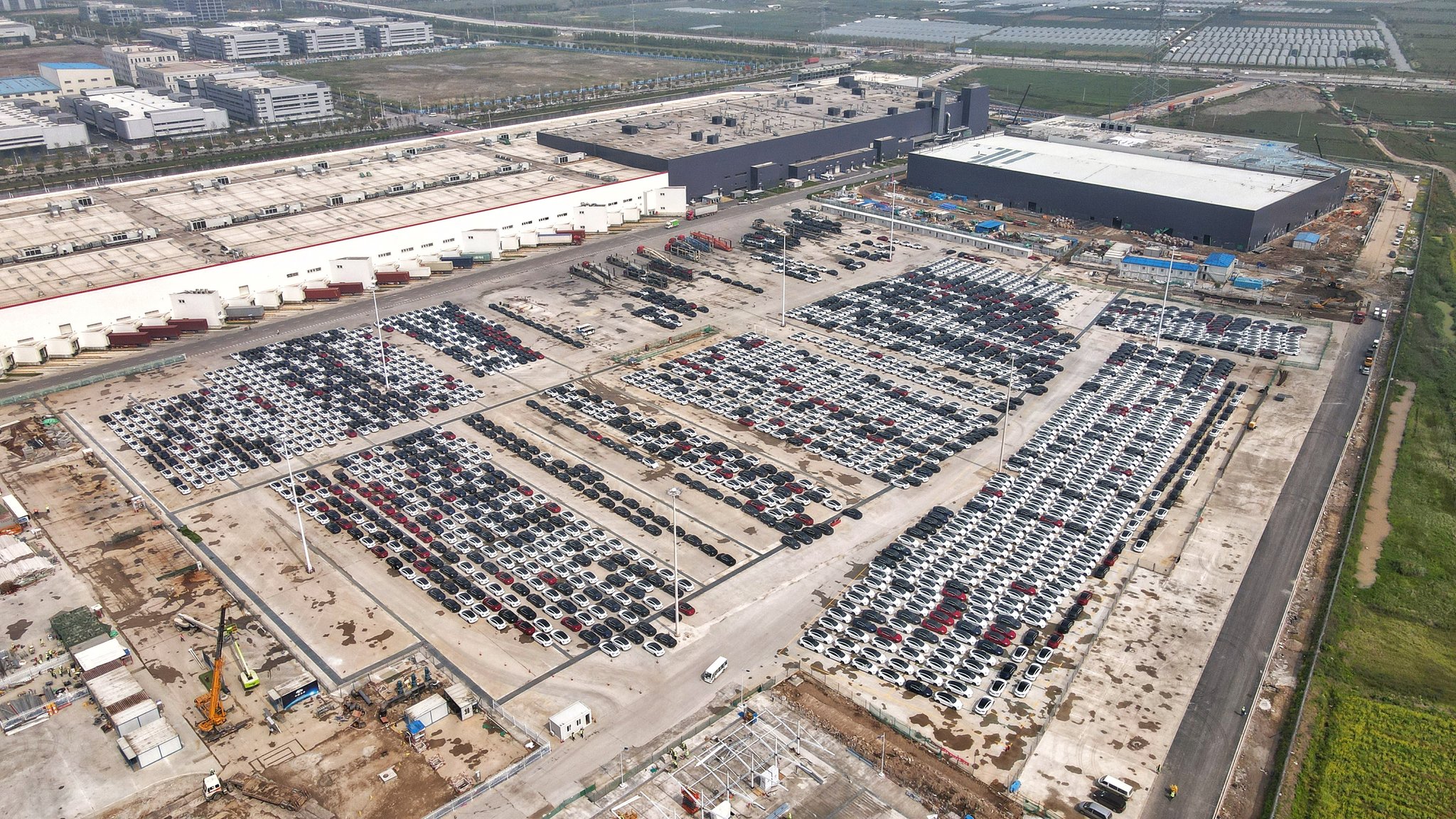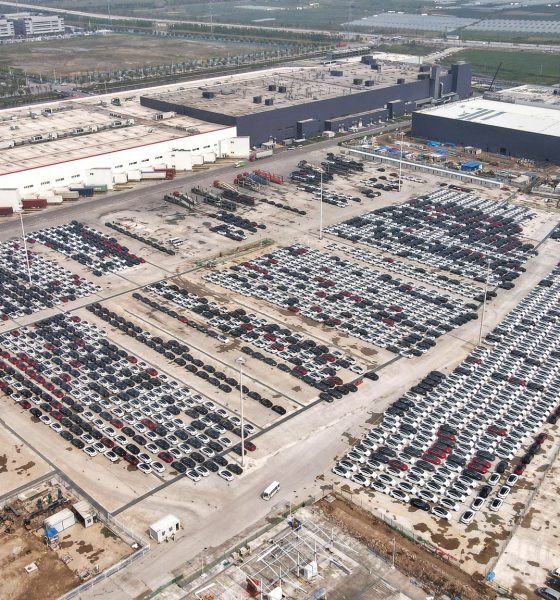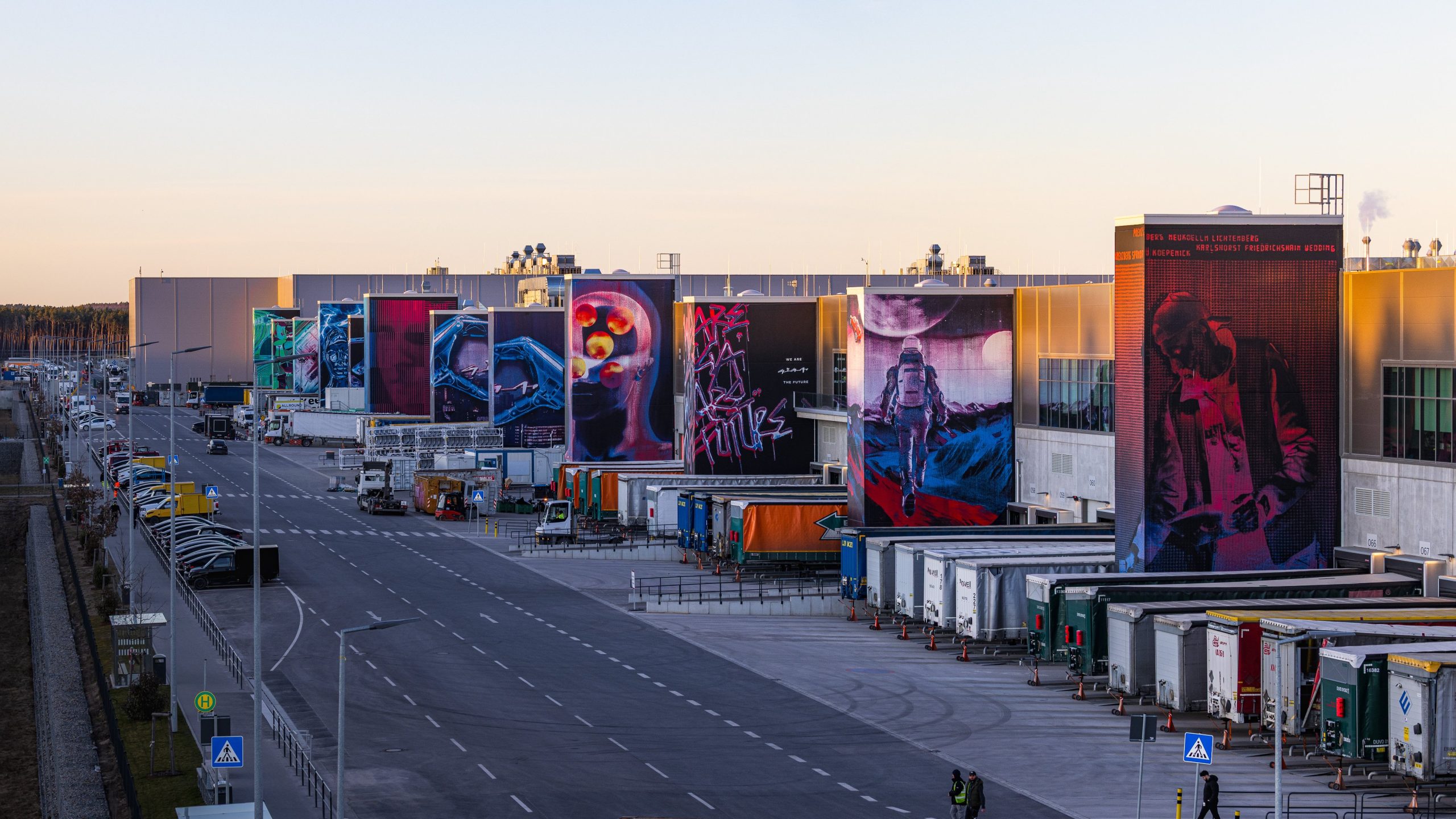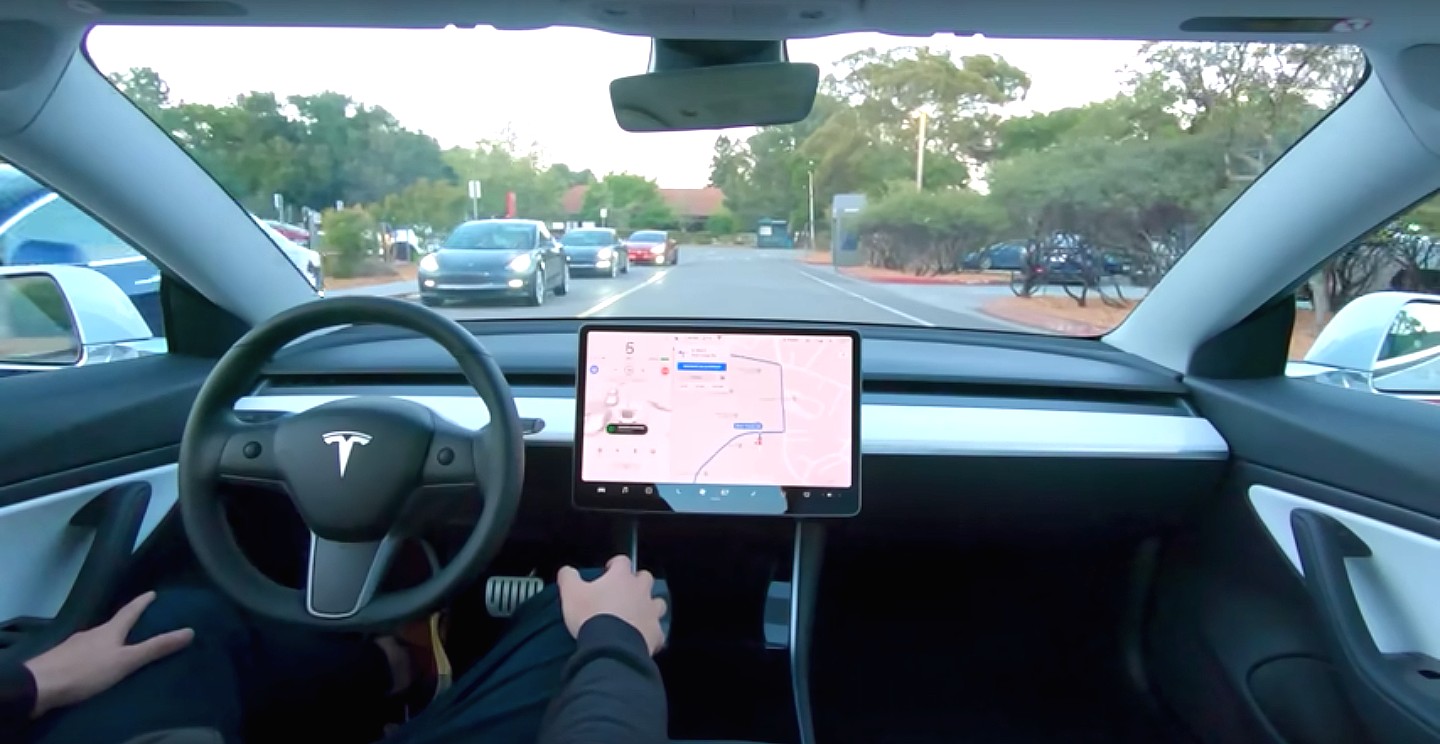

News
Elon Musk explains Tesla’s local and export strategy for factories like Giga Shanghai
Any individual who closely follows Tesla’s numbers from countries like China would see a pattern. In Gigafactory Shanghai’s case, the first month of the quarter typically corresponds to a dip in local sales. Domestic numbers would then increase in the second month all the way to the end of the quarter. This has caused critics to question the demand for Tesla’s vehicles in China persistently.
A great example of this happened earlier this week as Tesla reported its July 2021 numbers from China. A look at Tesla’s wholesale numbers would show that the company sold a total of 32,968 vehicles, though 24,347 of them were exported abroad. This meant that Tesla China’s domestic sales took a 68% dive compared to June, when the company sold 28,138 to the local market.
With such a drop, it was no surprise that numerous Tesla critics, including some mainstream media outlets, promptly ran away with the narrative that China’s local sales are at a steep decline. Allegations of a “demand cliff” were not uncommon on social media, as were references to the company’s previous challenges in the country, such as an over-the-air software update that was branded as a “recall.”
A tweet from CEO Elon Musk has now provided some concrete clarifications about the fluctuations of Tesla China’s domestic and export numbers. According to the CEO, Tesla currently makes cars for export in the first half of a quarter. Musk did not specify if this was unique to Giga Shanghai or if this was true for the Fremont Factory as well, but he did state that the second half of a quarter is allocated for the local market.
The CEO also provided some insight on Tesla’s ongoing supply shortages for certain standard automotive chips, stating that so far, the most problematic are components from Renesas & Bosch. This is not a Tesla-exclusive issue, of course, as all automakers today have been affected by the shortages. Even the Ford Mustang Mach-E’s orders have been delayed by six weeks due to supply chain challenges.
Musk’s explanation would likely not be enough to persuade the company’s critics that there is no such thing as a “demand cliff” in China. Despite this, it is at least quite reassuring to see Musk directly confirm something that has been evident among those that have been closely following the company’s strategy in projects such as Gigafactory Shanghai.
Don’t hesitate to contact us with news tips. Just send a message to tips@teslarati.com to give us a heads up.

News
Tesla Giga Berlin is still ramping production to meet Model Y demand: plant manager
Tesla Gigafactory Berlin has expanded to two full shifts, as per the facility’s plant manager, and a lot of it is due to Model Y demand.

Tesla Gigafactory Berlin has expanded to two full shifts, as per the facility’s plant manager, and a lot of it is due to Model Y demand. While registrations in some countries such as Sweden have fallen sharply this year, the company’s sales in other key territories have been rising.
Giga Berlin shifts to two shifts
Giga Berlin factory manager André Thierig told the DPA that the facility has been running two shifts since September to manage a surge in global orders. And due to the tariff dispute with the United States, vehicles that are produced at Giga Berlin are now being exported to Canada.
“We deliver to well over 30 markets and definitely see a positive trend there,” Thierig said.
Despite Giga Berlin now having two shifts, the facility’s production still needs to ramp up more. This is partly due to the addition of the Tesla Model Y Performance and Standard, which are also being produced in the Grunheide-based factory. Interestingly enough, Giga Berlin still only produces the Model Y, unlike other factories like Gigafactory Texas, the Fremont Factory, and Gigafactory Shanghai, which produce more than one type of vehicle.
Norway’s momentum
Norway, facing an imminent tax increase on cars, has seen a historic spike in Tesla purchases as buyers rush to secure deliveries before the change takes effect, as noted in a CarUp report. As per recent reports, Tesla has broken Norway’s all-time annual sales record this month, beating Volkswagen’s record that has stood since 2016.
What is rather remarkable is the fact that Tesla was able to achieve so much in Norway with one hand practically tied behind its back. This is because the company’s biggest sales draw, FSD, remains unavailable in the country. Fortunately, Tesla is currently hard at work attempting to get FSD approved for Europe, a notable milestone that should spur even more vehicle sales in the region.
News
Tesla launches crazy Full Self-Driving free trial: here’s how you can get it

Tesla is launching a crazy Full Self-Driving free trial, which will enable owners who have not purchased the suite outright to try it for 30 days.
There are a handful of stipulations that will be needed in order for you to qualify for the free trial, which was announced on Thursday night.
Tesla said the trial is for v14, the company’s latest version of the Full Self-Driving suite, and will be available to new and existing Model S, Model 3, Model X, Model Y, and Cybertruck owners, who will have the opportunity to try the latest features, including Speed Profiles, Arrival Options, and other new upgrades.
🚨 Tesla is launching a free 30-day trial of Full Self-Driving in North America for owners.
It includes every model, but you need v14.2 or later, and you cannot have already purchased the suite outright. https://t.co/8CNmxxOkVl
— TESLARATI (@Teslarati) November 27, 2025
You must own one of the five Tesla models, have Full Self-Driving v14.2 or later, and have an eligible vehicle in the United States, Puerto Rico, Mexico, or Canada.
The company said it is a non-transferable trial, which is not redeemable for cash. Tesla is reaching out to owners via email to give them the opportunity to enable the Full Self-Driving trial.
Those who are subscribed to the monthly Full Self-Driving program are eligible, so they will essentially get a free month of the suite.
Once it is installed, the trial will begin, and the 30-day countdown will begin.
Tesla is making a major push to increase its Full Self-Driving take rate, as it revealed that about 12 percent of owners are users of the program during its recent earnings call.
Tesla CFO Vaibhav Taneja said during the call:
“We feel that as people experience the supervised FSD at scale, demand for our vehicles, like Elon said, would increase significantly. On the FSD adoption front, we’ve continued to see decent progress. However, note that the total paid FSD customer base is still small, around 12% of our current fleet.”
Earlier today, we reported on Tesla also launching a small-scale advertising campaign on X for the Full Self-Driving suite, hoping to increase adoption.
Tesla Full Self-Driving warrants huge switch-up on essential company strategy
It appears most people are pretty content with the subscription program. It costs just $99 a month, in comparison to the $8,000 fee it is for the outright purchase.
News
Tesla Full Self-Driving warrants huge switch-up on essential company strategy

Tesla Full Self-Driving has warranted a huge switch-up on an essential company strategy as the automaker is hoping to increase the take rate of the ADAS suite.
Unlike other automotive companies, Tesla has long been an outlier, as it has famously ditched a traditional advertising strategy in favor of organic buzz, natural word-of-mouth through its production innovation, and utilizing CEO Elon Musk’s huge social media presence to push its products.
Tesla has taken the money that it would normally spend on advertising and utilized it for R&D purposes. For a long time, it yielded great results, and ironically, Tesla saw benefits from other EV makers running ads.
Tesla counters jab at lack of advertising with perfect response
However, in recent years, Tesla has decided to adjust this strategy, showing a need to expand beyond its core enthusiast base, which is large, but does not span over millions and millions as it would need to fend off global EV competitors, which have become more well-rounded and a better threat to the company.
In 2024 and 2025, Tesla started utilizing ads to spread knowledge about its products. This is continuing, as Full Self-Driving ads are now being spotted on social media platforms, most notably, X, which is owned by Musk:
NEWS: Tesla is running paid advertisements on X about FSD (Supervised). Here’s an ad they started running yesterday: pic.twitter.com/IHVywLMyTd
— Sawyer Merritt (@SawyerMerritt) November 25, 2025
Interestingly, Tesla’s strategy on FSD advertising is present in Musk’s new compensation package, as the eleventh tranche describes a goal of achieving 10 million active paid FSD subscriptions.
Full Self-Driving is truly Tesla’s primary focus moving forward, although it could be argued that it also has a special type of dedication toward its Optimus robot project. However, FSD will ultimately become the basis for the Robotaxi, which will enable autonomous ride-sharing across the globe as it is permitted in more locations.
Tesla has been adjusting its advertising strategy over the past couple of years, and it seems it is focused on more ways to spread awareness about its products. It will be interesting to see if the company will expand its spending even further, as it has yet to put on a commercial during live television.
We wouldn’t put it out of the question, at least not yet.









